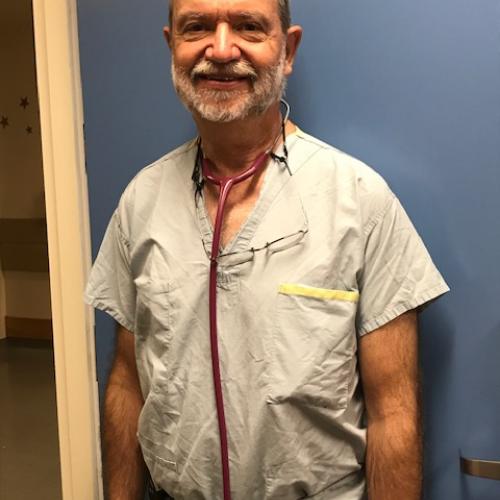- Overview
-
Surgery of the chest in infants and small pediatric patients is challenging. Anesthesia for these patients often involves placement of a very small balloon in one side of the lung or the other to facilitate the surgery. This is called a bronchial blocker. We are conducting a study comparing the 5 published methods of placement of this blocker with a novel method.
We have also designed a new method for caudal anesthesia (similar to epidural anesthesia for women in labor) in pediatric patients that we believe may allow the dose of local anesthetic to be reduced, to reduce side effects and improve the safety of this procedure.
- Publications
-
Evaluation of Personal Protective Equipment Using Low-cost Aerosol Monitors
Aerosol and Air Quality Research
Alberto Baldelli and Andrew Poznikoff and Kevin Heieis and Robert Purdy
DOI: 10.4209/aaqr.230323
2024Cranial conjoined twins: Surgical and anesthetic challenges for a routine procedure: Adenoidectomy and examination of ears
International Journal of Pediatric Otorhinolaryngology
Kozak, F.K. and Fandiño, M. and Carpes, L.F. and Peiris, K. and Malherbe, S. and Purdy, R.
DOI: 10.1016/j.ijporl.2010.12.019
2011Safety and efficacy of continuous morphine infusions following pediatric cranial surgery in a surgical ward setting
Child's Nervous System
Warren, D.T. and Bowen-Roberts, T. and Ou, C. and Purdy, R. and Steinbok, P.
DOI: 10.1007/s00381-010-1123-0
2010A Jehovah's Witness child with hemophilia B and factor IX inhibitors undergoing scoliosis surgery
Canadian Journal of Anesthesia
Chau, A. and Wu, J. and Ansermino, M. and Tredwell, S. and Purdy, R.
DOI: 10.1007/BF03017597
2008Airway complication related to an electromyography tracheal tube
Paediatric Anaesthesia
McCormack, J. and Purdy, R.
DOI: 10.1111/j.1460-9592.2008.02497.x
2008Early reversal of rapacuronium with neostigmine
Anesthesiology
Purdy, R. and Bevan, D.R. and Donati, F. and Lichtor, J.L.
DOI: 10.1097/00000542-199907000-00011
1999Association of mortality with age of blood transfused in septic ICU patients
Canadian Journal of Anaesthesia
Purdy, F.R. and Tweeddale, M.G. and Merrick, P.M.
DOI: 10.1007/BF03012772
1997 - Research
-
A comparison of published methods of bronchial blocker placement to a novel method of placement in an infant intubating mannequin
High volume caudal anesthesia in infants and a new technique of administration
Research Group MembersResearch Eduation Test Account, Test Account
Researching mental health and substance use: Q&A with new investigator Dr. Trevor Goodyear
Dr. Trevor Goodyear's interest in working with youth stems from several years as a registered nurse in Ontario and BC, including in child and adolescent mental health at BC Children's Hospital. He joined BCCHR as an investigator in October 2025.





